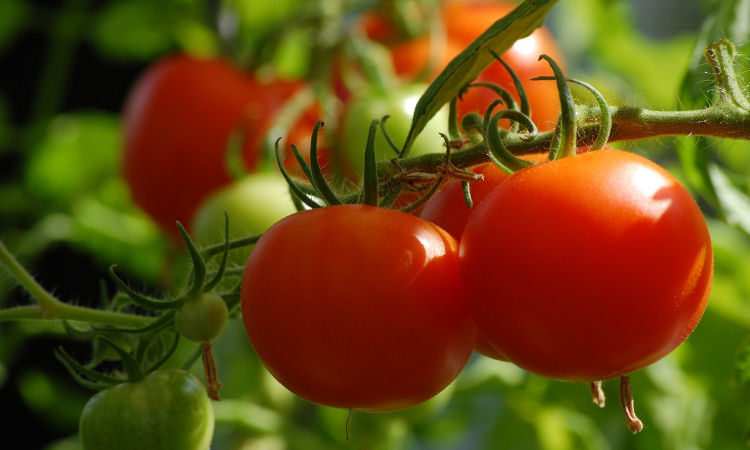Growing tomatoes in buckets and pots
Suffering from the limited gardening space? If you are into the hobby of home gardening and would like to grow tomatoes, then fear not! Because as long as you have sunlight, tomatoes can be grown anywhere.
Growing tomatoes in buckets and other containers is a practice not only constrained to people with limited gardening space. Plenty of home gardeners grow their vegetables in containers, even when there are free space in the backyard. There are many reasons for container gardening, but we grow tomatoes in containers mostly for convenience, control, and flexibility.
Growing tomatoes in containers is not too different from growing tomatoes in the outdoor soil. Like planting in the ground, it’s best to raise young tomato plants carefully indoors until they’re strong enough for transplant. Transplanting is similar for containers as for ground- bury as much of the plant stem as possible. Doing so will promote root formation along the portion of the stem that is buried, giving the plant excellent base foundations, a good thing regardless of where the tomato is grown.
With vegetables grown in containers, it’s possible to control the exact state of your growing medium. Once you’ve found the secret recipe to all your prior garden success, you can reuse it over and over again for future success. You can choose to go completely soilless, or completely organic, or a mixture of some of both. Growing tomatoes in containers give this important benefit.
- The most basic recipe for a good container soil mixture to grow vegetables is 40% compost, 40% peat moss, and 20% perlite.
Although tomatoes grown in containers frees you from messing with garden dirt, container vegetables do require more maintenance in terms of watering and fertilizing. Unlike traditional garden tomatoes, tomato plants in containers have limited root coverage, and their growth is limited by the amount of water and nutrients in the container. Tomatoes growing in containers may need to be watered daily in the heat of the summer, and sometimes even twice a day to prevent the plants from wilting up. Of course, this depends on how big your growing container is (bigger is always better), and whether you mulch or not. Tomatoes are especially water thirsty plants, so the better you can satisfy their watering needs, the better results you will be rewarded with come harvest.
Of course, you can mitigate all the disadvantages of container growing by simply installing automated drip irrigators for your containers. Though it sounds complicated, the setup is not expensive and actually quite easy to install. An automated drip irrigation system set up for a price range anywhere between $50-100, and you will save yourself a lot of hassles later. Depending on how many containers you have, this could be a worthy investment with great payoffs in the long run.
Applying mulching to containers may sound like an unnecessary chore associated with traditional gardening, but it’s a great way to reduce water evaporation and keep weeds down (if you’re using compost or garden soil). Pine bark mulch will work great, as will black plastic mulching. Mulching has the added benefit of keeping your tomato plants looking neat and organized.
When the first blossoms have set in on your plants, don’t be afraid to use more fertilizers. Twice the amount of normal usage will work. Increasing fertilization during first blossom formation will kick start fruit production and result in bigger yields. But whatever fertilization rate you use, try to keep it constant.
And don’t forget to pick your tomato fruits as soon as they’re ripe. It’s not a good idea to leave tomatoes on the vines for too long, and for every tomato you pick off, you’ll encourage the production of a new fruit.
Growing tomatoes in containers is indeed a very flexible and productive gardening practice. Don’t be afraid to get creative with your container gardens, as tomatoes are generally hardy plants.
